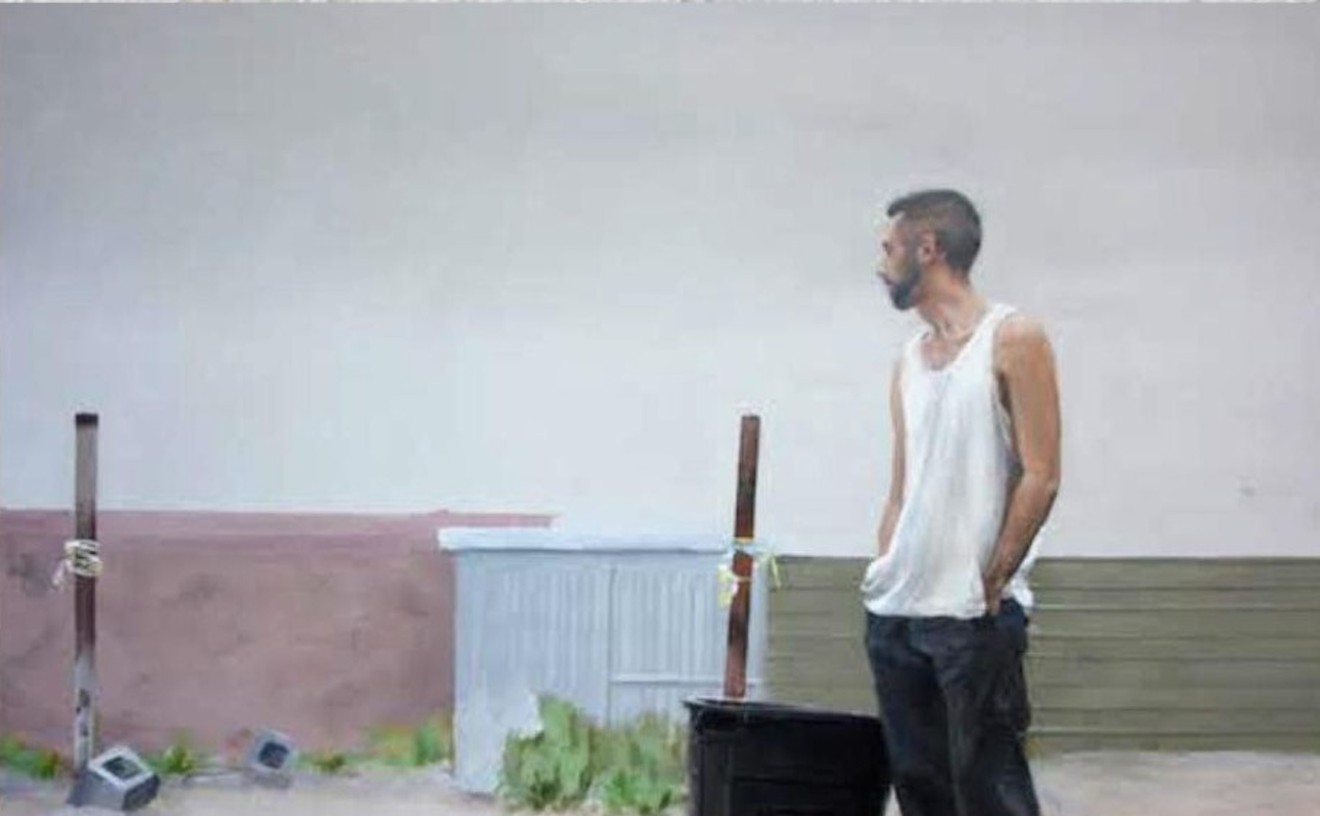In School Portrait, a wallet-size photo of a young blond girl wearing a pink shirt and a half-hearted smile lays discarded in a drive-in parking lot. A small tear runs through the center of the portrait, creating a hideous scar that mars the child's pristine ivory skin. Just a few inches away, a naturally heart-shaped stone peeks out of the dust. It's a heartbreaking image, especially for parents of young children who likely have similar photos tucked neatly in their billfolds.
The contrast of the clean, white-bordered photo and its dirty surroundings is unsettling. Who would drop a child's school photo in a lot littered with beer bottles and food wrappers? How long ago was the portrait taken, and where is the girl now? LeGoullon turned the picture over, but the back was blank. Not a bad thing, considering it's the mystery of this piece that makes it so alluring.
In LeGoullon's previous works, several of which are on display in the adjoining room's mini-exhibit, "Relics," the artist showed a mastery of lighting and contrast that transformed mundane objects into something magical. An abandoned racetrack shot at dusk is breathtaking. A dilapidated piano becomes a boardwalk scene with a gorgeous, muted, blue horizon when viewed from afar. That magic is lost in "Intermission" — all that's left is a post-apocalyptic wasteland of last night's beer-cooler debris. The colors are faded and dusty, the landscapes bleak. LeGoullon paints a depressing picture of the decline of the drive-in from family fun center to white-trash hangout.
A round patio table with attached benches sits unused in Table, the asphalt underneath cracked and worn. Nearby, rusted metal trash cans perfectly aligned in a corridor of faded parking-lot stripes highlight the emptiness of The Pathway. LeGoullon has a good eye for modern composition. Here, he casually places the table off-center and creates a perfect representation of perspective straight out of Drawing 101. Both images are technically solid, but it's the eeriness of the desolate landscapes that offers the greatest impact. There's a sense of abandonment and tension, as if LeGoullon is previewing the aftermath of a nuclear explosion — or perhaps, given his playful nature, the Zombie Apocalypse.
I felt a palpable sense of relief as my eyes traveled past these bleak and barren landscapes to Tread Marks, in which tracks in the dry mud prove that several people have driven through the drive-in parking lot recently. It's like crossing into civilization after a long car trip past open desert and abandoned fields. The effect is heightened by the Zen-like quality of the swirling tread patterns on the dirt canvas. It's a calming image.
"Intermission" chronicles time's effect on a handful of the country's few remaining drive-in theaters, and no piece does that more successfully than the cheeky 99 Bottles, Their Caps on the Wall. LeGoullon collected more than 200 metal bottle caps in various stages of decay from the drive-in grounds and laid out 99 of them in perfect rows — photographed and mounted behind Plexiglas. The result is a striking image that combines Warhol's pop art style with the lowbrow beer bottle posters found in mall gift shops. Each cap represents a piece of the drive-in's past. While only a CSI lab tech could discern the age of the heavily degraded caps, there's a good chance that 99 Bottles chronicles each decade from the theater's opening until the 21st century. Pretty impressive for a city that supposedly lacks history.
If LeGoullon's photographs are any indication, Arizona's drive-ins aren't aging gracefully. Parking lots are strewn with debris. The few remaining speakers are rusting. Concession stands are worn, the clapboard signs advertising "Join Us Tonite for Movies" stowed in a rickety red Fry's shopping cart behind a chain link fence. Looking at LeGoullon's images, it's hard to resist drawing a parallel between the dilapidated drive-ins and the human experience. Aging can be lonely, and isn't always pretty. But — like the destruction of the original Cine Capri — there's nothing we can do to stop it.










